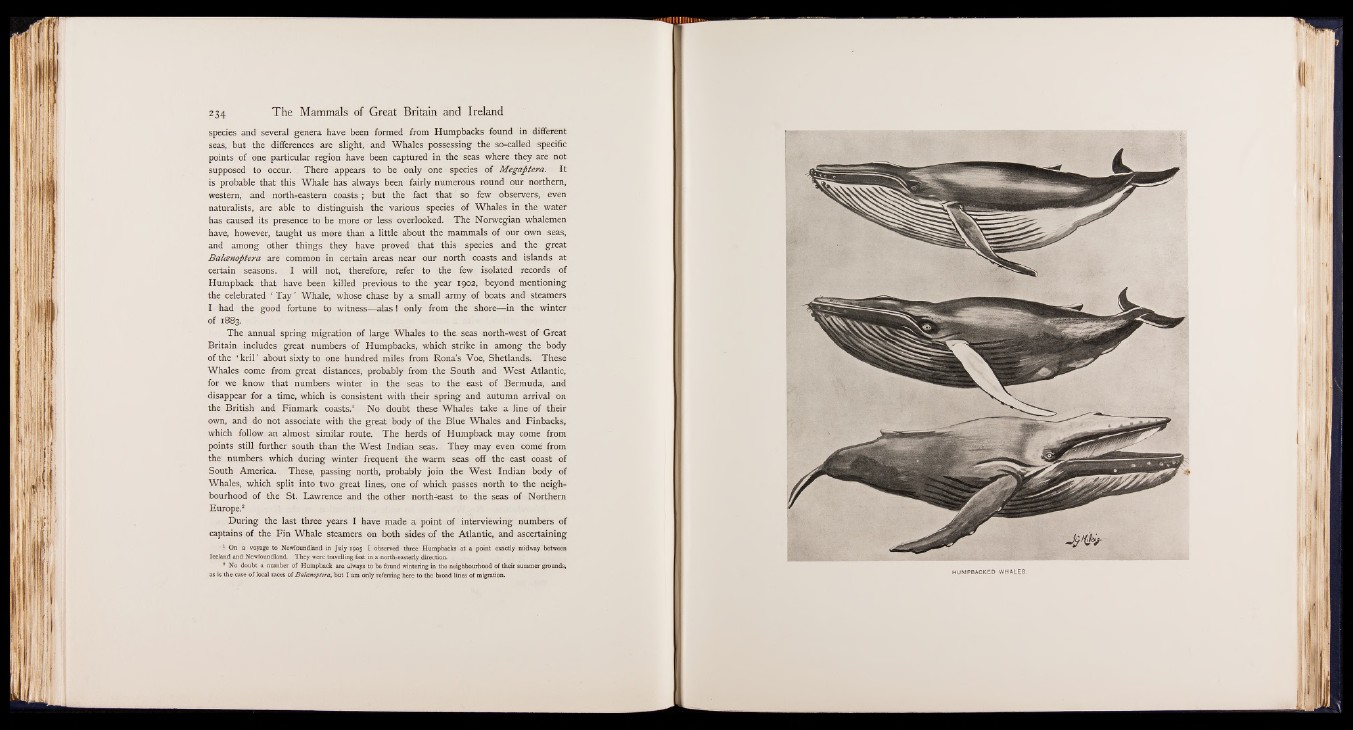
species and several genera have been formed from Humpbacks found in different
seas, but the differences are slight, and Whales possessing the so-called specific
points of one particular region have been captured in the seas where they are not
supposed to occur. There appears to be only one species of Megafitera. It
is probable that this Whale has always been fairly numerous round our northern,
western, and north-eastern coasts; but the fact that so few observers, even
naturalists, are able to distinguish the various species of Whales in the water
has caused its presence to be more or less overlooked. The Norwegian whalemen
have, however, taught us more than a little about the mammals of our own seas,
and among other things they have proved that this species and the great
Balcenofitera are common in certain areas near our north coasts and islands at
certain seasons. I will not, therefore, refer to the few isolated records of
Humpback that have been killed previous to the year 1902, beyond mentioning
the celebrated ‘ Tay ’ Whale, whose chase by a small army of boats and steamers
I had the good fortune to witness— alas! only from the shore— in the winter
of 1883.
The annual spring migration of large Whales to the. seas north-west of Great
Britain includes great numbers of Humpbacks, which strike in among the body
of the ‘ kril ’ about sixty to one hundred miles from Rona’s Voe, Shetlands. These
Whales come from great distances, probably from the South and West Atlantic,
for we know that numbers winter in the seas to the east of Bermuda, and
disappear for a time, which is consistent with their spring and autumn arrival on
the British and Finmark coasts.1 No doubt these Whales take a line of their
own, and do not associate with the great body of the Blue Whales and Finbacks,
which follow an almost similar route. The herds of Humpback may come from
points still further south than the West Indian seas. They may even come from
the numbers which during winter frequent the warm seas off the east coast of
South America. These, passing north, probably join the West Indian body of
Whales, which split into two great lines, one of which passes north to the neighbourhood
of the St. Lawrence and the other north-east to the seas of Northern
Europe.2
During the last three years I have made a point of interviewing numbers of
captains of the Fin Whale steamers on both sides of the Atlantic, and ascertaining
■ 1 On a voyage to Newfoundland in July 1905 I observed three Humpbacks at a point exactly midway between
Iceland and Newfoundland. They were travelling fast in a north-easterly direction.
* No doubt a number of Humpback are always to be found wintering in the neighbourhood of their summer grounds,
as is the case of local races of Balanoplera, but I am only referring here to the bioad lines of migration.